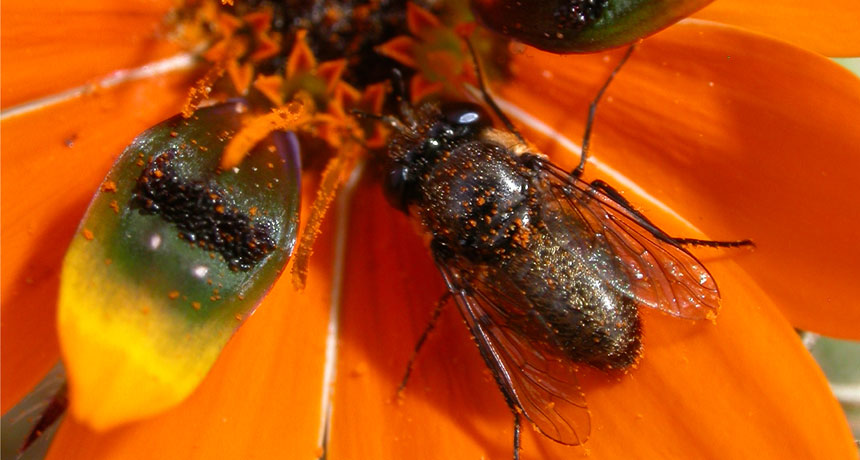
Scientists have discovered how a daisy native to South Africa imitates female flies to attract males for pollination. The daisy known as Gorteria diffusa is the only one of its kind known to do this. Researchers from the University of Cambridge have found three sets of genes that create this illusion. They published their findings this week in ‘Current Biology.’
These genes came about over an evolutionary time span of 2 million years. According to scientists this is relatively short. It is believed the flowers evolved to beat out competition. South Africa’s Namaqualand desert swiftly blooms for a short few months after the winter rains. Due to the abundance of plant life during this time, the Gorteria diffusa has imitated female flies so that the “male fly comes in and lands very specifically onto the spot as if they want to mate with it,” Beverley Glover at the University of Cambridge states. While trying to mate the fly pollinates the daisy. On the petals of the flower are the hairy bumps and white highlights that create this illusion.

Throughout their studies, the team at Cambridge found three genes that produce this effect. They also found that these genes already existed, performing other functions. The bluish-black pigments on the petals were from genes that move iron throughout the plant. The hair-like texture is caused by the genes that make root hairs so that the plant absorbs nutrients from the soil. The fake flies appear on different petals by the genes that communicate to the plant when to bloom.

The study has been big news in the science community, specifically in the biology and botanical sphere. Steve Johnson of the University of KwaZulu Natal in South Africa says the study, “contributes to solving one of the major problems in mimicry research.” It is distinctly helpful in tracing back how stages of gene copying are used by plants to gradually evolve complex structures.
